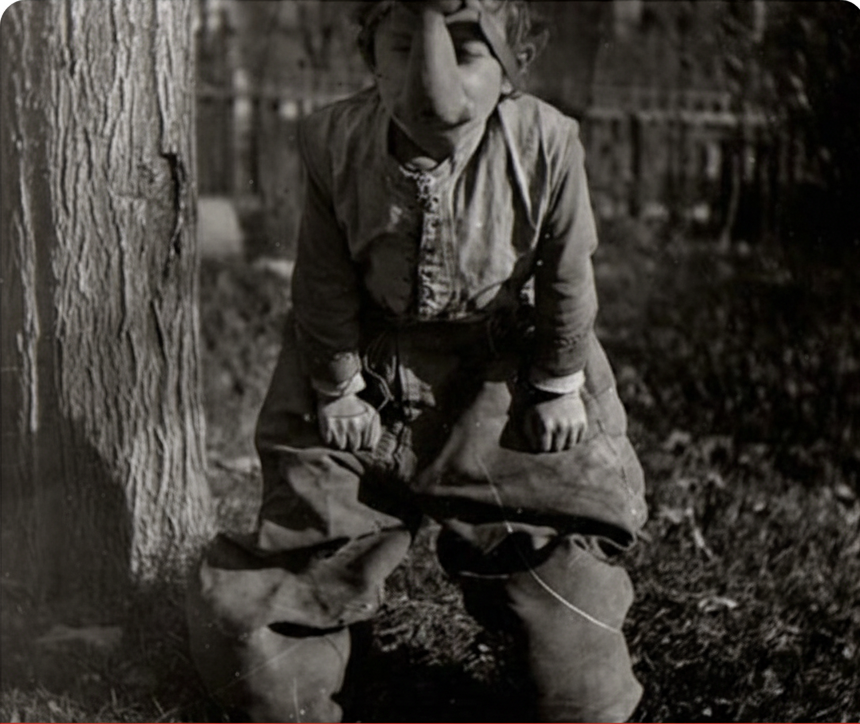Halloween Costumes Were Far Scarier 100 Years Ago — Why Vintage Masks Still Haunt Us Today
When most of us think about Halloween today, we picture kids running from house to house in bright superhero outfits, princess dresses, or neatly packaged costumes picked up from a store. There are pumpkins glowing on porches, plastic skeletons rattling in the wind, and candy overflowing in plastic buckets. It feels lighthearted, colorful, and family-friendly. But if you take a step back in time and look at what Halloween looked like a century ago, the entire holiday feels almost unrecognizable. The costumes weren’t glossy, polished, or cute. They were eerie, rough, and unsettling in ways that modern costumes could never be.
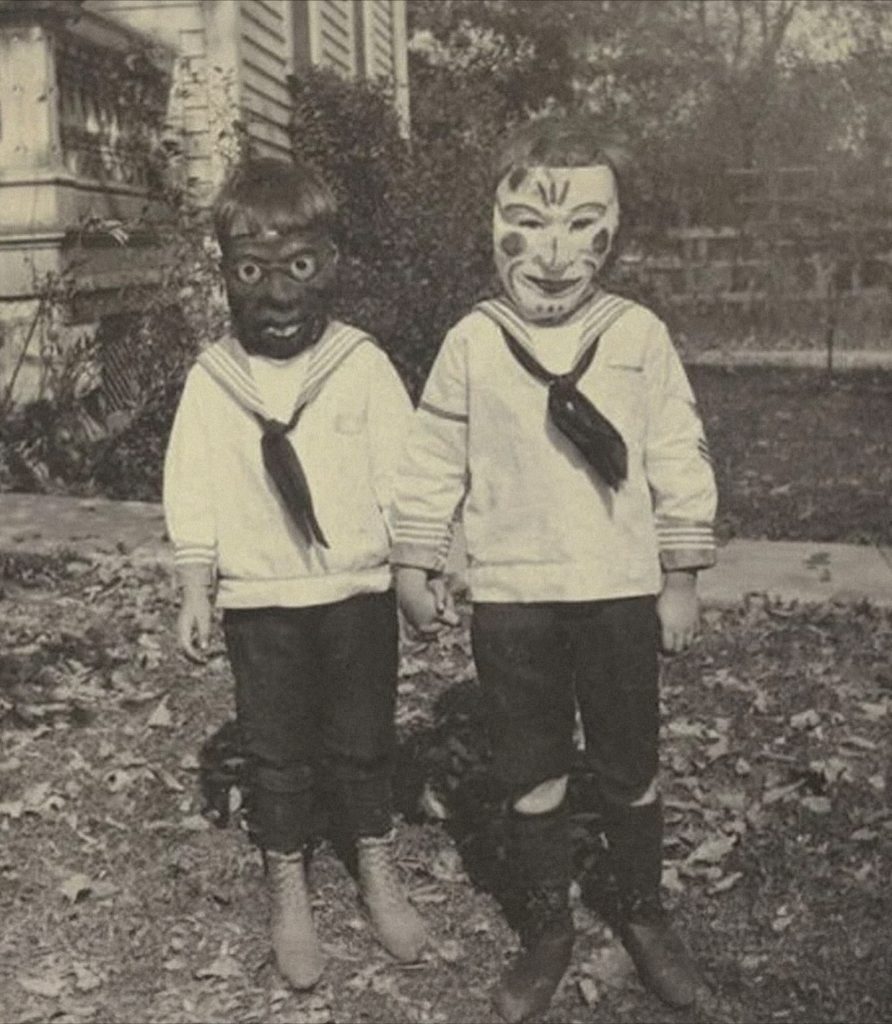
One glance at old photographs from the early 1900s is enough to send shivers down your spine. The people in those faded black-and-white images don’t look playful. They look like they’ve stepped out of a nightmare. Their masks were often crudely made from paper, burlap, or cardboard, cut and stitched together by hand without symmetry or polish. Some wore hollow-eyed masks that seemed lifeless, while others wore exaggerated noses, distorted mouths, or hollow, ghostlike expressions that made them far scarier than today’s plastic masks. These costumes weren’t designed to be Instagram-ready. They were simple, homemade disguises, and it’s exactly that raw, unfinished quality that makes them so haunting to look at now.
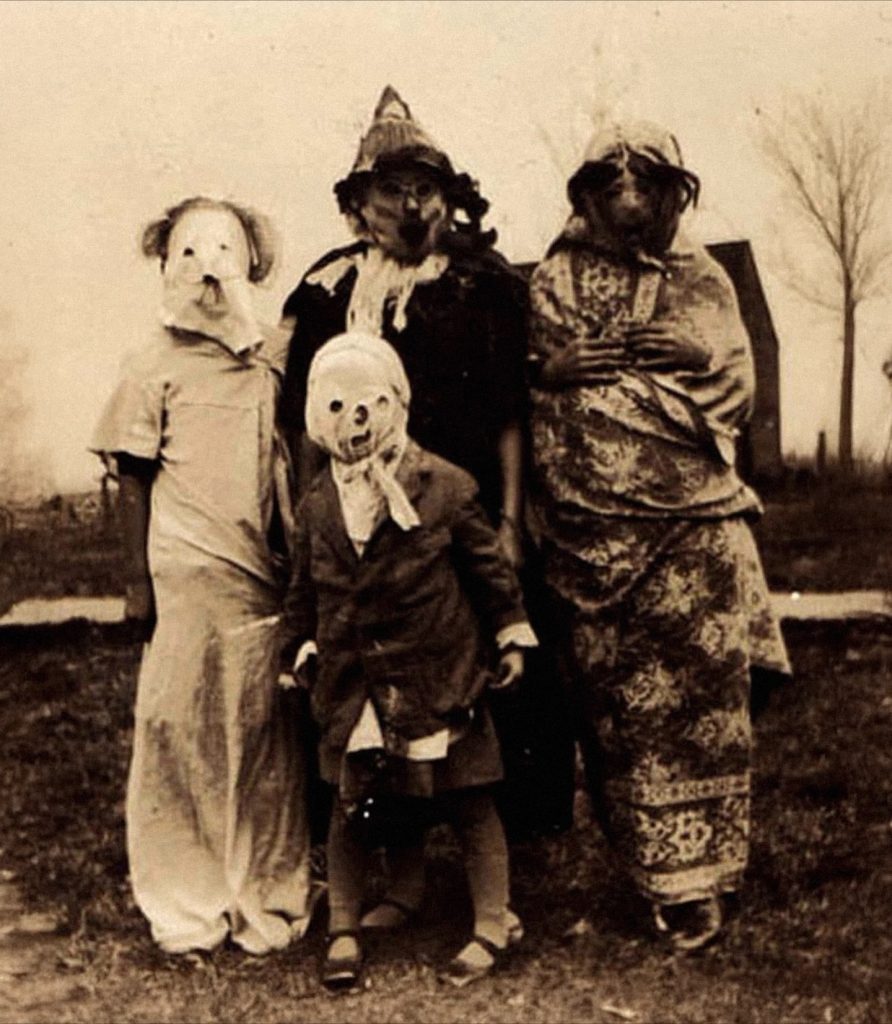
Back then, Halloween wasn’t yet the highly commercialized holiday we know today. There were no aisles of costumes in stores, no movie tie-ins, and no safety regulations making sure everything looked cheerful. People made their own disguises out of what they had, which often meant using sheets, rags, old coats, or farm materials. Sometimes, they stitched together masks that didn’t quite fit, or painted faces in ways that were more grotesque than entertaining. These handmade efforts gave each costume a strange authenticity, almost as if the wearers weren’t just dressing up, but channeling something darker.
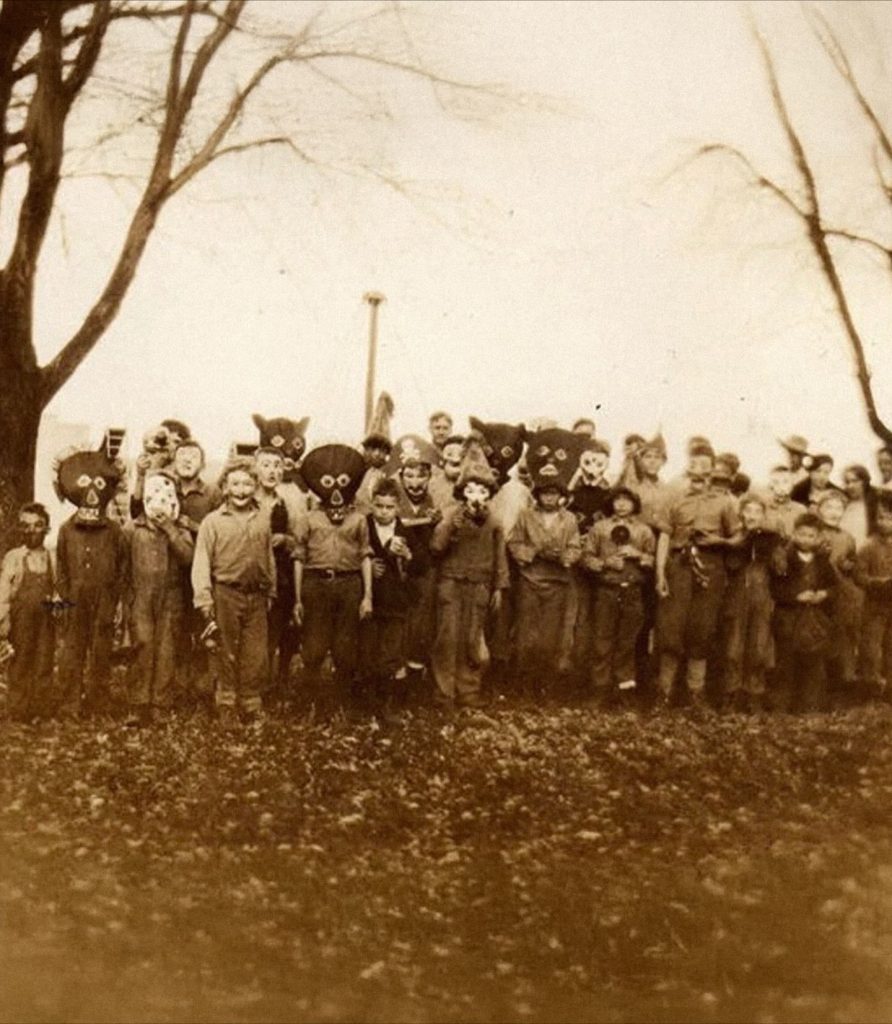
The eerie look of these vintage costumes also reflected the atmosphere of Halloween itself a hundred years ago. It was less about candy and more about mischief. Kids and teenagers roamed neighborhoods playing pranks, knocking on doors, and causing trouble. The night carried a sense of unpredictability, and the costumes matched that energy. Looking at those photos today, the blurred edges, the stark shadows, and the haunting faces behind masks feel more like something from a horror film than a neighborhood tradition.
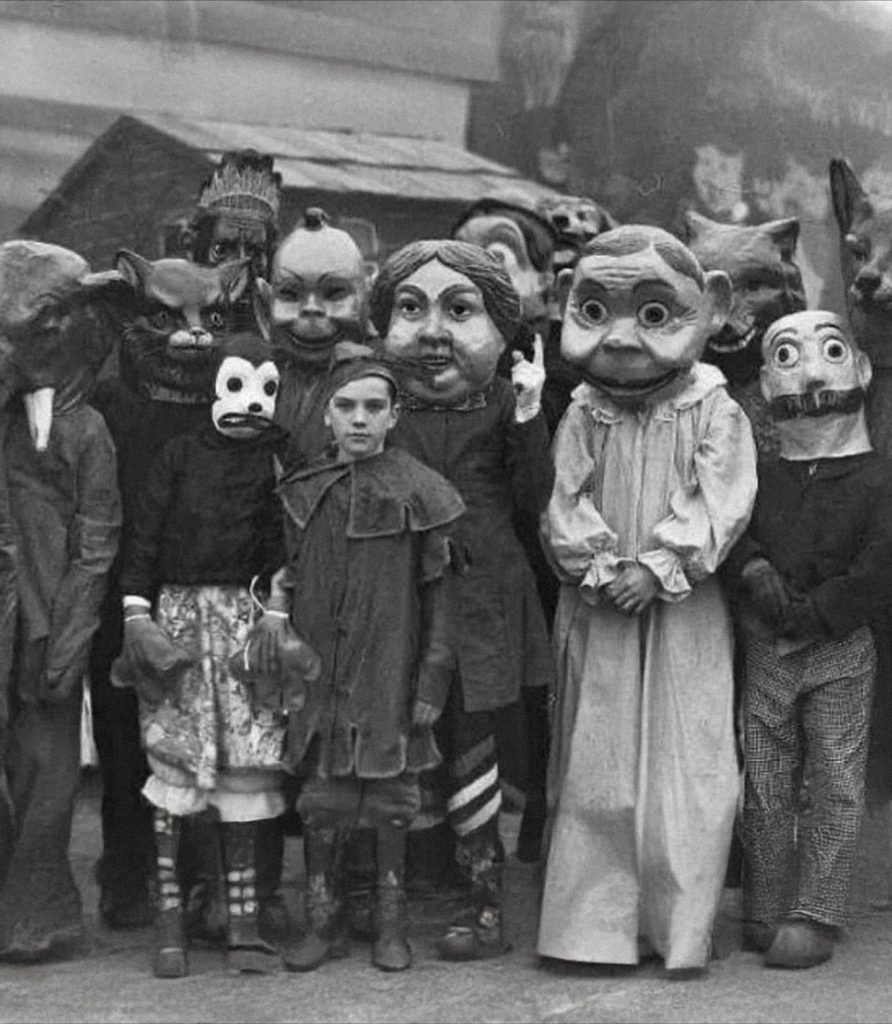
It’s easy to forget that Halloween itself has roots in old-world traditions that were always meant to be spooky. It grew from Samhain, an ancient Celtic festival that marked the end of harvest and the beginning of winter, when it was believed the line between the living and the dead grew thin. Masks and disguises were originally worn to ward off spirits or confuse them. By the time these traditions traveled to America, they carried echoes of that original eeriness, and you can see it in the crude costumes of the early 20th century. They weren’t just for fun; they carried remnants of superstition and fear.
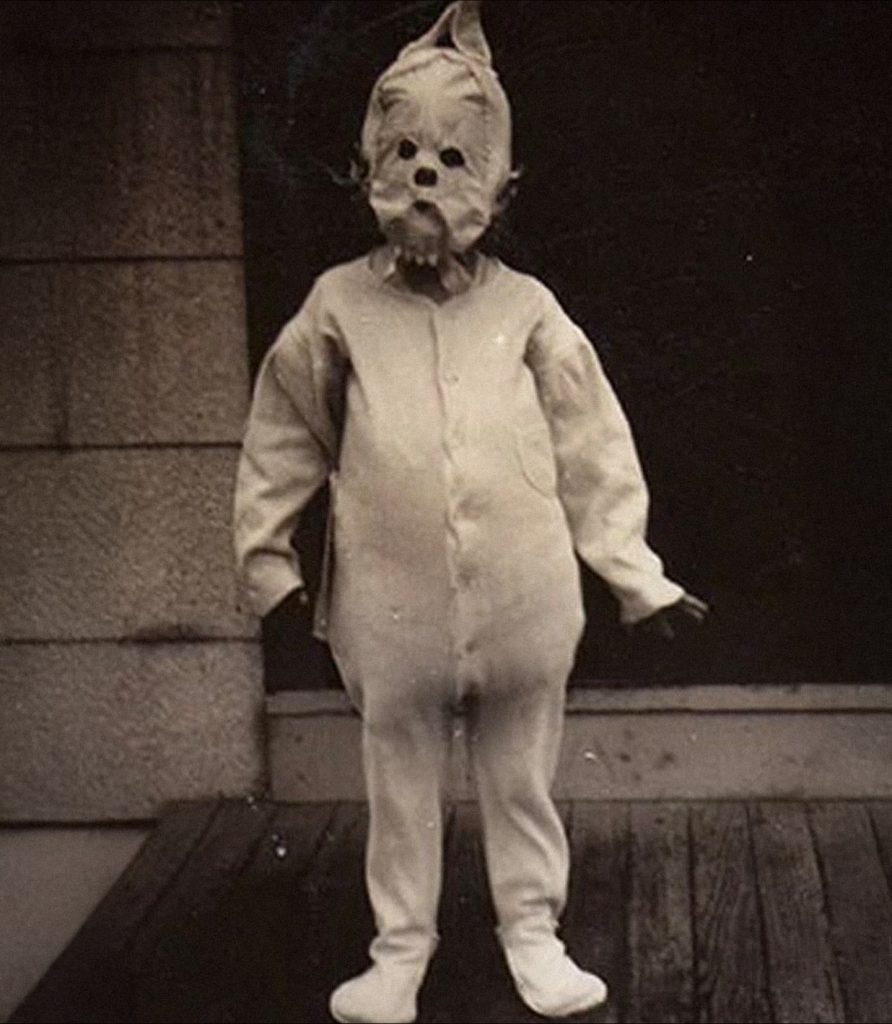
Today, Halloween has shifted into something much more playful and safe. Costumes are cute, funny, or glamorous. Even the scary ones are polished with Hollywood-inspired designs that feel more like entertainment than genuine terror. But when you look at those grainy, century-old photographs, you realize that the spirit of Halloween once lived much closer to its darker origins. Those costumes, with their distorted masks and rough edges, seem almost otherworldly. They remind us that fear used to be the heart of the holiday, not candy or decoration, but the thrill of unsettling anyone who crossed your path.
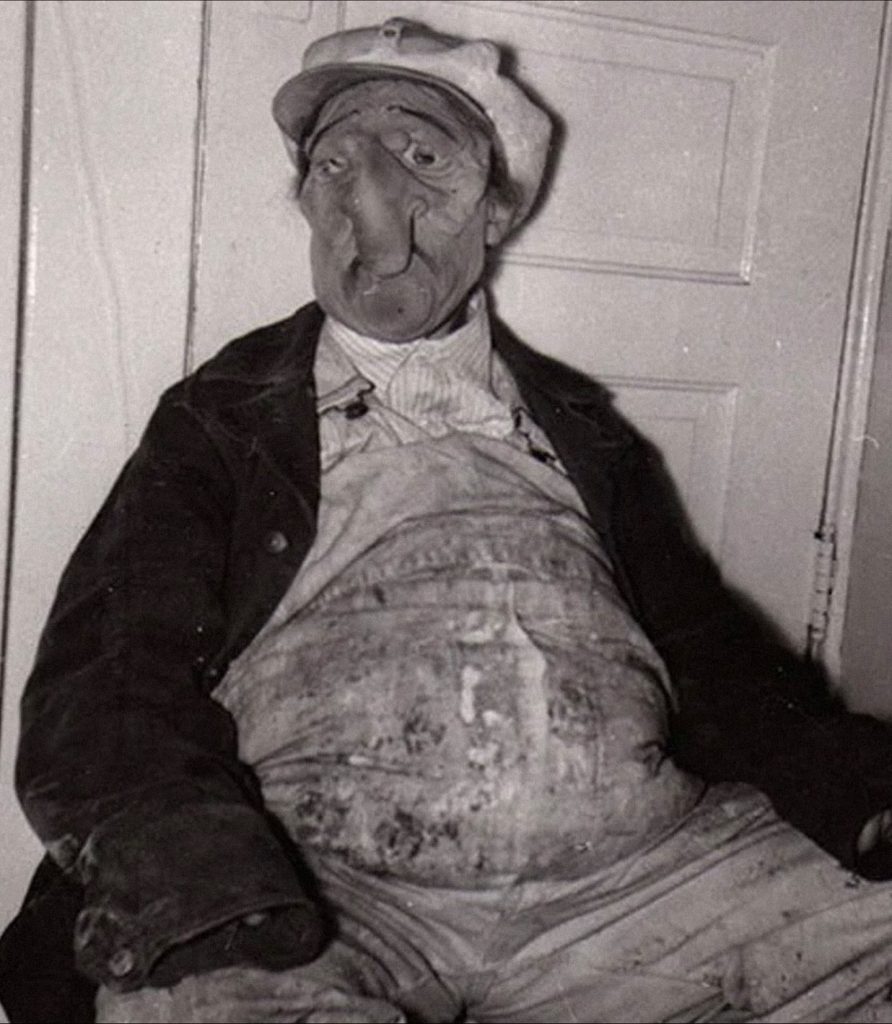
And maybe that’s why people are so fascinated when they see these vintage Halloween images resurface online. They are a portal into a time when the holiday really did feel spooky, when disguises weren’t polished performances but raw attempts to scare. A hundred years later, the effect still works. Those old photographs may fade and crack with age, but the unsettling feeling they leave behind is timeless.

Daniel Reed is a curious mind with a passion for breaking down how the world works. With a background in mechanical engineering and digital media, he turns complex ideas into easy-to-understand articles that entertain and inform. From vintage tools and modern tech to viral internet debates and life hacks, Daniel is always on the hunt for the “why” behind the everyday. His goal is simple: make learning feel like scrolling through your favorite feed — addictive, surprising, and fun.
